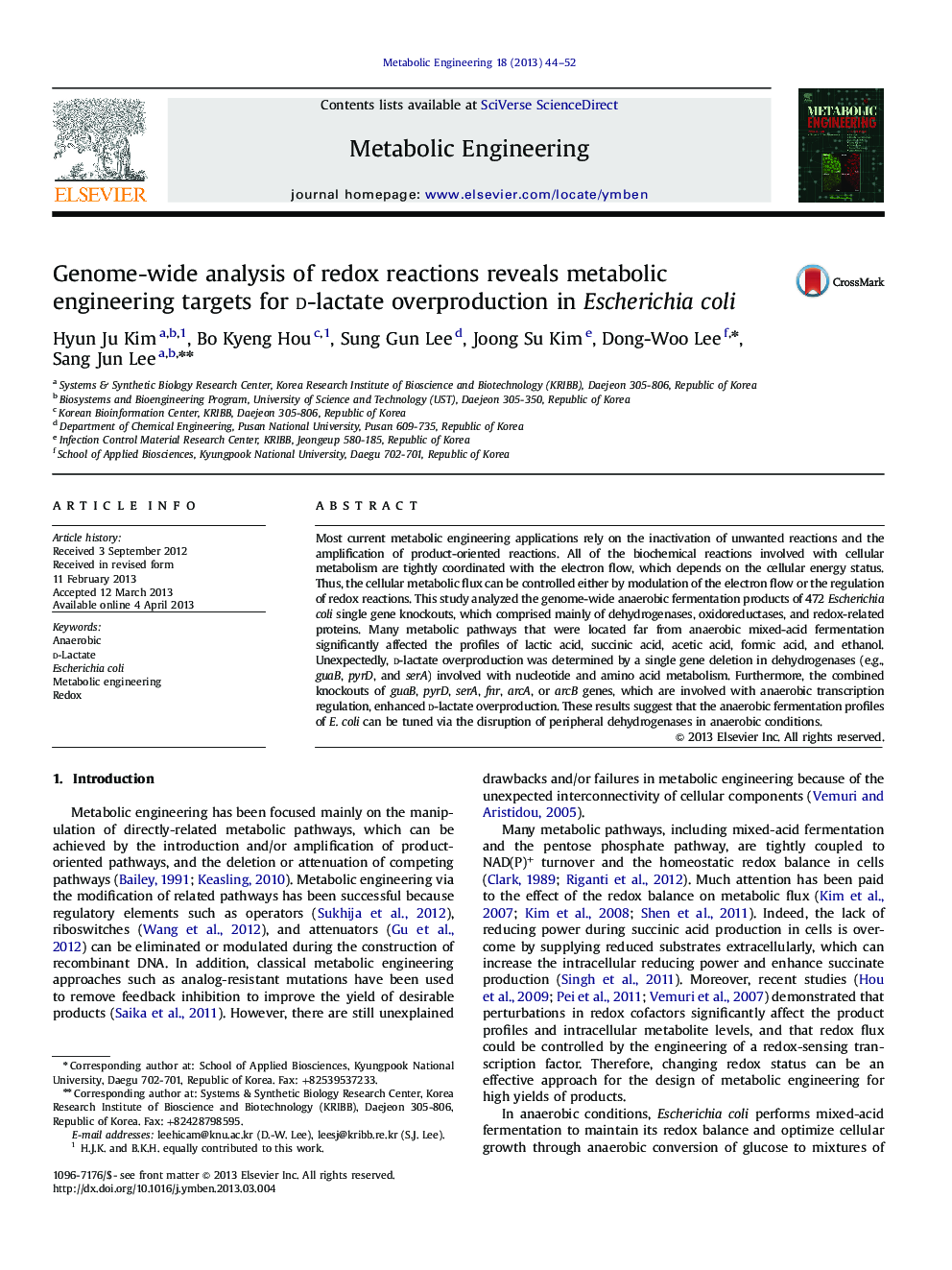| Article ID | Journal | Published Year | Pages | File Type |
|---|---|---|---|---|
| 31554 | Metabolic Engineering | 2013 | 9 Pages |
•Relation between redox biochemical reactions and mixed-acid fermentation was proposed.•Anaerobic mixed-acid fermentation profiles of 472 E. coli single gene knockouts were analyzed.•Several peripheral redox-related biochemical reactions are closely connected to d-lactate fermentation.•Systems metabolic engineering could be achieved by controlling redox-related enzymes and transcription factors.
Most current metabolic engineering applications rely on the inactivation of unwanted reactions and the amplification of product-oriented reactions. All of the biochemical reactions involved with cellular metabolism are tightly coordinated with the electron flow, which depends on the cellular energy status. Thus, the cellular metabolic flux can be controlled either by modulation of the electron flow or the regulation of redox reactions. This study analyzed the genome-wide anaerobic fermentation products of 472 Escherichia coli single gene knockouts, which comprised mainly of dehydrogenases, oxidoreductases, and redox-related proteins. Many metabolic pathways that were located far from anaerobic mixed-acid fermentation significantly affected the profiles of lactic acid, succinic acid, acetic acid, formic acid, and ethanol. Unexpectedly, d-lactate overproduction was determined by a single gene deletion in dehydrogenases (e.g., guaB, pyrD, and serA) involved with nucleotide and amino acid metabolism. Furthermore, the combined knockouts of guaB, pyrD, serA, fnr, arcA, or arcB genes, which are involved with anaerobic transcription regulation, enhanced d-lactate overproduction. These results suggest that the anaerobic fermentation profiles of E. coli can be tuned via the disruption of peripheral dehydrogenases in anaerobic conditions.
